Are you one of those people who think that Scrum is for a bunch of software nerds who sit around programming all day?
Maybe it’s time to shift your perspective.
Yes, Scrum originally took hold in the Software industry as companies realized how Scrum allowed them to adopt and react to a rapidly evolving market. These early adopters moved faster than their competitors and became industry leaders in no time. However, the co-creator developed the original concepts while at West Point and then as a fighter pilot before becoming a medical researcher.
Now Scrum has returned to its roots making waves in other industries from oil and gas to consumer products, and the military. Apart from the US Army, companies such as Tesla and Google use agile delivery methods to improve their project delivery.
Scrum is now entering design and construction with early adopters gaining market advantage.
Complicated versus complex
What is the difference between complicated and complex? When something is complicated, it has lots of moving parts.
For example, a motor engine is complicated with a lot of moving parts and in-depth math that goes into it, but it's not necessarily complex. It doesn't have a lot of variables. Once it’s working, it's working.
Construction is in theory complicated. There’s lots of moving parts when we simulate a build in a computer, for example. We can plan everything out to the final detail and it actually should work when there’s not many unknowns. The issue arises upon implementation when projects become extraordinarily complex. For example, someone doesn't show up to work. All of a sudden, we've got a part that's broken.
The construction process has had inefficiencies for a long time, and recent data suggests the rise of complexity in projects is accelerating the problem. The complexity starts already in the design phase with many unknowns because of compliance and state and federal regulations, for example. According to the FMI study North American Megaprojects 2019, the annual value of megaproject starts in the U.S. increased from 3% of the total U.S. starts in 2013 to approximately 33% of total U.S. starts in 2018. Growth in historical megaproject spending has been led by industrial and infrastructure investments.
As a response, construction companies have been adopting Lean to drive process efficiency. It gives people a common platform and shared objective for their project.
However, an efficient process is only the first step. Unlike manufacturing, construction has many outside variables. And from our research within the construction space and talking to a lot of people in the industry, there have been, unfortunately, years of mistrust and not necessarily assumptions of positive intent. Reality suggests the more witnessed approach is to unintentionally pass on as much risk as possible due to the current processes in place. Systems thinking has not fully been introduced nor embraced yet. People are still not used to working with others in this way and tend to have their individual piece of paper with their individual objectives.
There is still room to improve. A lot of people are neglecting the connection between Lean and Scrum. Scrum allows operationalizing Lean and provides a framework to enable Lean teams to create continuous improvement and organizational communication pathways. It allows teams to dynamically adjust and react to real-world situations that are happening. The challenge is to evolve the project plan in the most efficient way possible while staying coordinated. By looking at Scrum at scale, companies can quickly respond to the changing realities of a construction site.

Innovative solutions for complex problems
Scrum Inc was founded in 2006 by Dr. Jeff Sutherland, co-creator of Scrum and one of the signatories of the Agile Manifesto. At Scrum Inc, we offer operational business consulting and have helped hundreds of companies across many industries, such as the military, healthcare, hardware, software, manufacturing, oil and gas, and construction, that use the Scrum framework to come up with innovative solutions for complex problems in an ever-changing world.
Here are three examples of unique problems from various industries solved with Scrum:
Northrop Grumman - Aerospace
In May 2019, Northrop Grumman fired the first stage of the OmegATM in their northern Utah test area. Major static tests of this scale require months of preparation with many team members. The test area team decided to see if they could reduce the time required to prepare for the second stage of their OmegA rocket engine by applying Scrum.
“We’ve applied Scrum in many areas where the methods easily transfer to our business, but trying it with a motor test required a lot of ingenuity,” explained Charlie Precourt, VP, Propulsion Systems.
The first step was going through iterations that blended Scrum with the current work scope. The collaboration presented challenges, and the team quickly identified roadblocks in the transferability between Scrum and their current way of working. For example, they had to change their old ways of operating to incorporate key functions earlier, and some team members had to expand the previous scope of their roles.
“People from multiple engineering groups came out of their silos and to the product. Our customer also co-located to work with us. That enabled us to make smart and efficient decisions together in the test bay. We got more work done and saved time.”
Using Scrum created greater efficiencies and saved significant time during the months of test preparation. In comparing the two back-to-back tests, the verdict on which way was better became clear.
The team is now incorporating the design improvements validated in the second stage test back into the first stage using Scrum. In this way, Scrum not only helps with meeting schedules and reducing costs, but it reduces technical risk going forward.
“Change can be hard to implement, and I appreciate the willingness and ingenuity of this team. We’ll continue to deploy Scrum across the plant and reap the benefits of better communication, faster development, and closer customer collaboration.” Andrew Martin, Project Engineer and Static Test Lead.

City of Detroit - Healthcare
When COVID broke out, the City of Detroit approached Quicken Loans to help them set up a website for a new testing center within 10 days using an Agile plan.
A day later, the team had worked out that they would only need five days to get the site up and running. Through instant customer feedback they found out that they actually needed an entire order fulfillment system.
Sticking to Scrum at Scale, the team adopted one-day sprints focused on delivering an MVP (minimum viable product) every day.
Scaled Reviews helped maintain and manage dependencies between the teams, Sprint Retrospectives helped the teams refocus.
Within five days, the team set up an entire order fulfilment system including
- Call center-based scheduling
- Leveraging an integrated scheduling software that handles logistics, capacity and special designations
- Data communication with the labs and the department of health with HIPPA-compliant barcoding, and
- Daily schedules for onsite staff.
As a result, the City of Detroit processed 200 tests on the first day, 400 within the first week and reached over 1,000 tests a day thereafter.

Complex Construction Project
A complex megaproject (>1% country GDP) adopted Scrum through the end-to-end process reducing the design-to-build by over 7 months and delivering 10% below budget.
The engineering team was three months ahead of the budget because of the following enablers:
- Daily Scrum held in both locations using the same printed paper material.
- Modular designed components with special teams attacking the interfaces.
- Standing up teams of contractors on end-to-end value streams so that everyone knew the next component.
- Visualization of impediments which were quickly swarmed on by specialized cross-functional teams
- Employee engagement skyrocketed driving speed.
Construction was completed four months ahead of schedule. Key enablers:
- The rhythm of Scrum kept the teams engaged and lead to rapid identification of impediments, which could be removed daily.
- Inspections were built into the definition of done and accelerated. Work could not continue until issues were resolved.
- Teams were held accountable for their team working agreements and would debrief daily how they did against their working agreements.
- Detailed backlogs went out no more than three months.

Scrum works best in complex situations
We believe that Scrum works best in complex adaptive situations and that’s why it is a perfect framework for complex construction projects with many moving parts. Inspection and adaptation on a frequent cadence help bring design, engineering and construction companies to the front of the line to deliver. We can drastically decrease waste and significantly increase client satisfaction.
The scrum framework can operationalize what the team is trying to achieve and help them to drive a common goal at scale.
Are you embracing Scrum in your design, engineering and/or construction projects?
Further reading:



